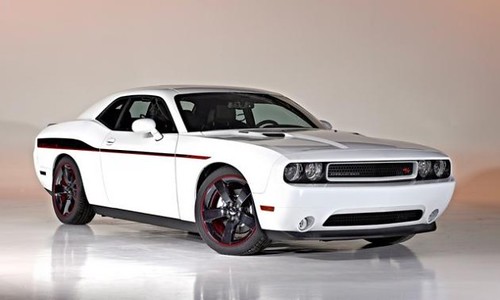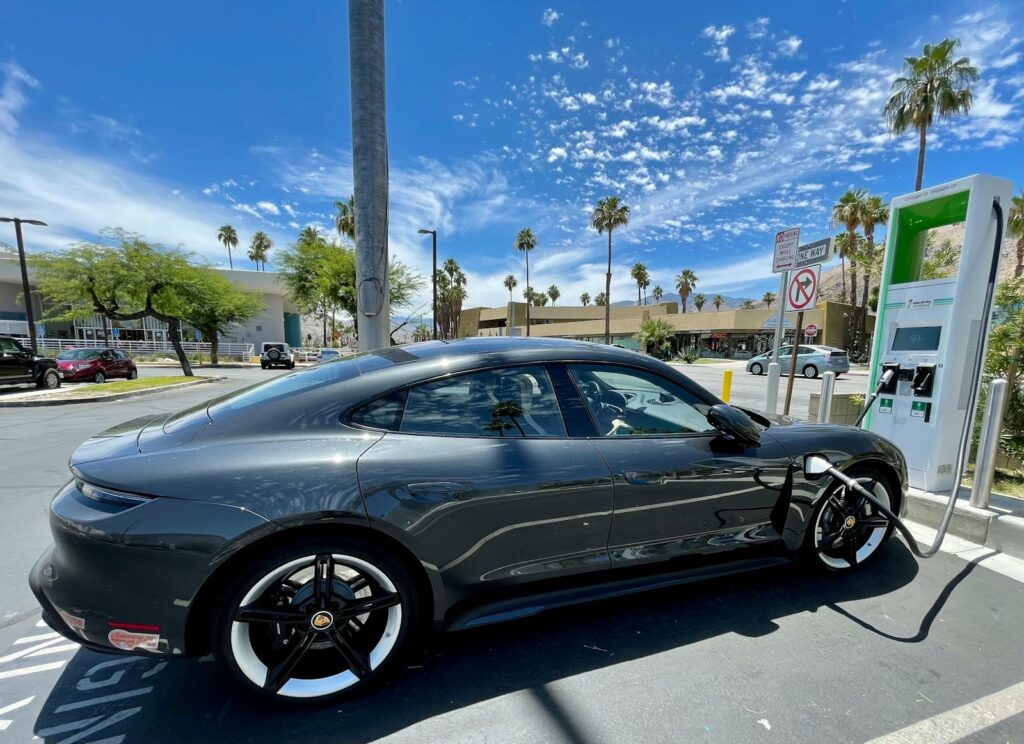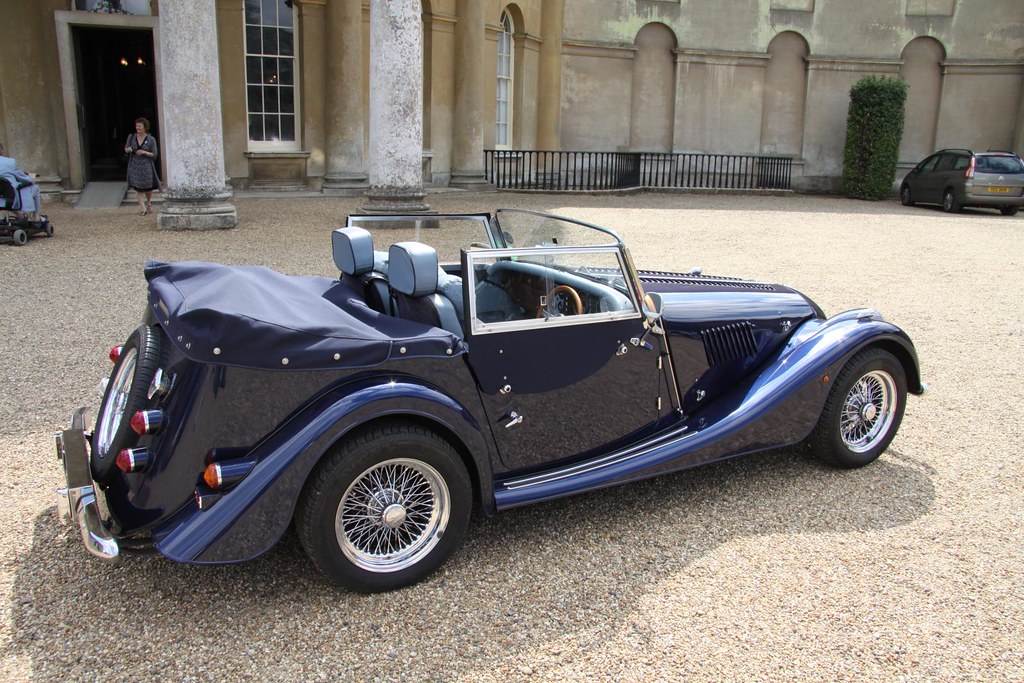
There’s a unique thrill that comes with uncovering forgotten treasures, especially when those treasures are encased in sheet metal and powered by internal combustion. The world of automotive archaeology constantly surprises us, proving that sometimes, the most extraordinary finds aren’t behind velvet ropes or in climate-controlled garages, but tucked away in the quiet decay of long-abandoned properties. These discoveries are more than just old cars; they are time capsules, offering a poignant glimpse into bygone eras and the lives that once revolved around these magnificent machines.
Imagine the suspense, the dust-choked air, and the palpable sense of history as explorers push through rusted gates and tangled overgrowth, not knowing what automotive marvels might lie beneath the decades of neglect. These aren’t just rust heaps; they are often rare sports cars, forgotten classics, and powerful machines that once graced roads and track, now waiting patiently for someone to tell their story again. The allure of the ‘barn find’ is legendary among enthusiasts, a testament to the enduring power of automotive design and engineering.
From remote British countrysides to seemingly ordinary suburban garages, a series of truly astounding discoveries have recently captivated the automotive world. Each site, left untouched for decades, has yielded a remarkable collection of vehicles, painting a vivid picture of the past and reigniting the imaginations of collectors and historians alike. Let’s embark on a journey to explore some of the most compelling finds, starting with an estate that redefined what a ‘barn find’ could be.
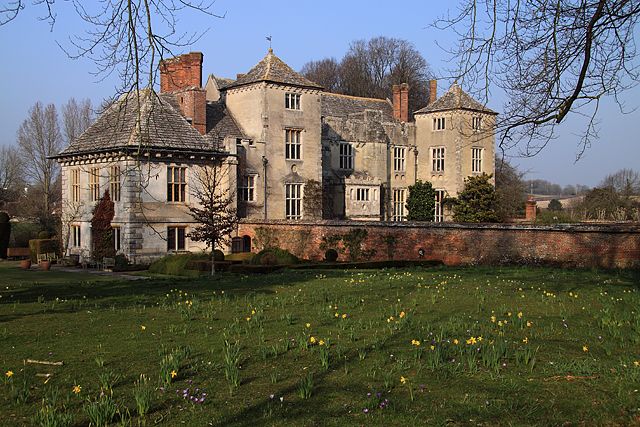
1. **The British Countryside Estate: A Portal to the Past**Tucked away behind hedges and rusted gates, an abandoned estate in the British countryside initially appeared unremarkable. However, what awaited explorers from @VacantHaven was anything but ordinary. As the team began to delve deeper, they uncovered a collection of buildings almost entirely swallowed by vines and collapsed roofs, hinting at a once-active history that had slowly succumbed to nature’s embrace.
Inside these crumbling structures, the sheer volume of items left behind was astonishing, including furniture, tools, and scattered belongings that offered clues to everyday life. This vast property, left untouched for decades, was a sealed archive of not just domestic remnants but, more significantly, a treasure trove of automotive history. The scale and undisturbed nature of the site truly set it apart, making it one of the most compelling British barn find locations in recent memory.
The presence of hidden cars only added to the profound intrigue of the discovery. Posters from the Euro 1996 football tournament still hung in place, while fridges, garden tools, and even a dreamcatcher remained where they had last been used. This untouched environment reinforced the estate’s value, not just for the vehicles themselves, but for the rich context it provided, allowing explorers and enthusiasts to step back in time.
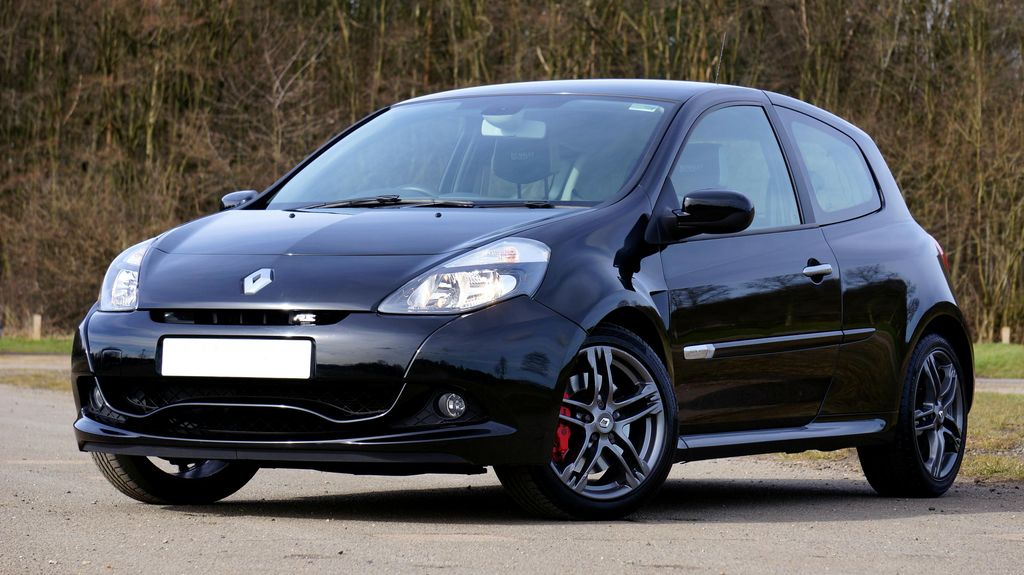
2. **The Elusive Renault Clio Sport**Among the various rare sports cars discovered throughout the British countryside property, a Renault Clio Sport stood out as a particularly noteworthy find. This agile and enthusiast-focused hot hatch, despite its unassuming appearance under layers of moss and makeshift covers, represented a significant piece of modern automotive performance history. Its presence underscored the diverse range of vehicles that can be found in such forgotten places.
The Clio Sport, along with its Peugeot counterpart, had remained untouched and unregistered for years, a silent testament to the passage of time and the property’s prolonged abandonment. For collectors and fans of performance compacts, discovering a Clio Sport in such a state of preservation, albeit needing significant attention, is a thrilling prospect. It speaks to a personal passion for motoring that was clearly once vibrant on this estate.
While the context doesn’t detail its specific condition beyond being covered in moss and unregistered, the very fact of its discovery on an abandoned estate makes it a valuable canvas for restoration experts. Its originality, unmarred by subsequent ownership or modifications, could make it particularly appealing to those looking to revive a piece of hot hatch heritage. Such finds are valuable not just for the vehicles but for the stories they implicitly tell.
Read more about: 18 Rare European Car Gems You Probably Haven’t Seen
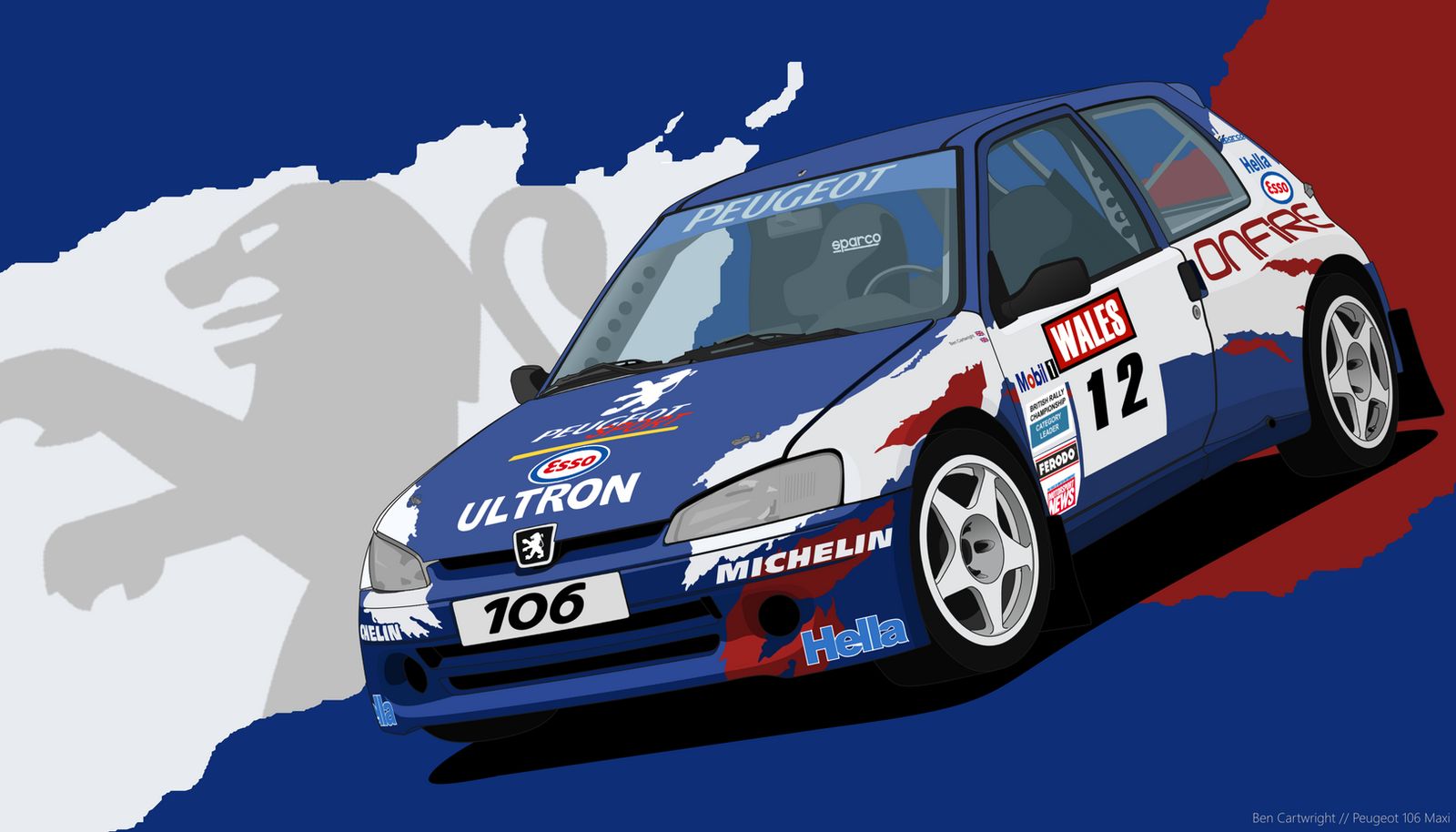
3. **The Unregistered Peugeot 106 Quiksilver**Sharing the same fate and location as the Renault Clio Sport was a Peugeot 106 Quiksilver, another exciting discovery for enthusiasts of nimble, lightweight performance cars. These vehicles, often overlooked by mainstream collectors in favor of high-dollar exotics, hold a special place in the hearts of those who appreciate driving purity and accessible performance. The 106 Quiksilver, like its Renault counterpart, was found beneath makeshift covers and layers of moss, having been untouched and unregistered for an extended period.
The discovery of two such specific and enthusiast-oriented models, the Clio Sport and the 106 Quiksilver, side-by-side, suggests a deliberate collection or perhaps the last vestiges of a personal fleet. It speaks volumes about the original owner’s discerning taste and appreciation for specific driving dynamics. These weren’t just random cars; they were chosen for their character and performance.
For potential restorers, the untouched nature of these vehicles presents a unique opportunity. Their originality is a key factor, as it allows for a more authentic restoration process, bringing them back to their former glory without the complications of previous modifications. The Peugeot 106 Quiksilver, though humble in comparison to supercars, represents a segment of automotive history that is increasingly celebrated, making its rediscovery truly significant.
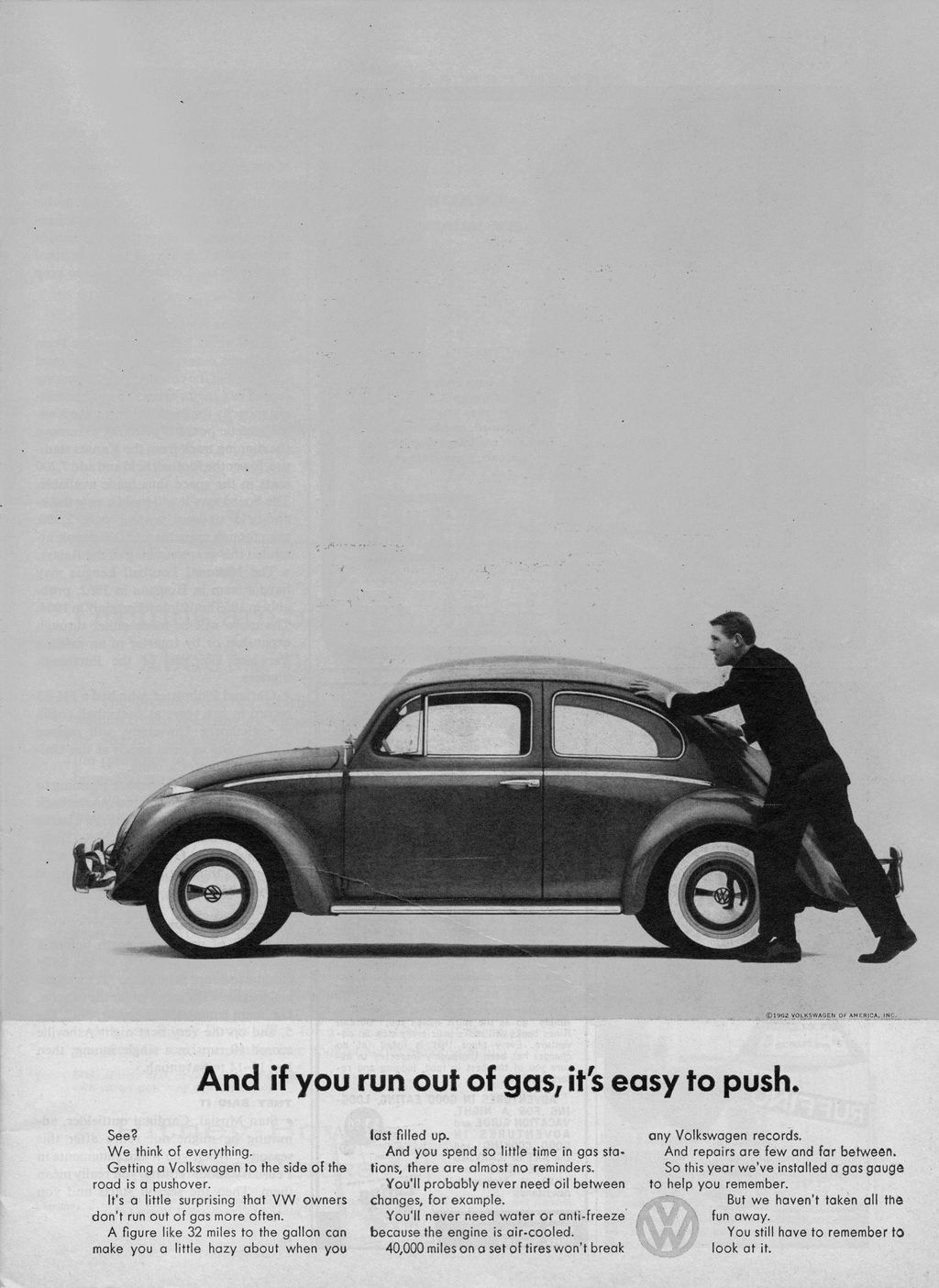
4. **Unexpected Daily Drivers: The Chrysler Voyager and Volkswagen Beetle**The British countryside estate wasn’t exclusively about performance or rare sports cars; it also yielded fascinating examples of more common, yet equally poignant, vehicles. Among the broader finds were a Chrysler Voyager and a Volkswagen Beetle, discovered parked near rusting caravans and sunken outbuildings. These vehicles, while perhaps not as outwardly glamorous as the sports cars, painted a more complete picture of the estate’s former life, suggesting it was once a bustling, working property.
The presence of a Chrysler Voyager, a practical family minivan, hints at the daily routines and domestic life that once thrived on the estate. It serves as a reminder that these abandoned sites are not just repositories of forgotten dreams but also of everyday realities. Similarly, the Volkswagen Beetle, an iconic symbol of accessible motoring, further reinforces the narrative of a property that was once actively used for both work and personal transportation.
These vehicles, despite their more common nature, contribute significantly to the narrative of the British barn find. They suggest that this was once a comprehensive collection, perhaps not just for pleasure but for the functional needs of the inhabitants. Their condition, parked near rusting caravans and sunken outbuildings, emphasizes the long period of abandonment and the extent to which nature had begun to reclaim the entire property.
Car Model Information: 2022 Chrysler Voyager LX
Name: Chrysler Voyager
Manufacturer: Chrysler (automotive brand)
Aka: Lancia Voyager (2011–2016),Chrysler Grand Caravan (2020–present)
Class: Minivan
Production: 1988–2016,2019–present
BodyStyle: minivan
Predecessor: Plymouth Voyager,Lancia Phedra,Dodge Grand Caravan
Related: Dodge Caravan,Chrysler Town & Country (minivan),Chrysler Pacifica (minivan),Volkswagen Routan
Categories: 2000s cars, 2010s cars, All-wheel-drive vehicles, All articles needing additional references, All articles with unsourced statements
Summary: The Chrysler Voyager (and the long-wheelbase Chrysler Grand Voyager) is a minivan produced by the Chrysler division of Stellantis. In the current lineup, it is positioned as the lower-end Chrysler minivan, having replaced the Dodge Grand Caravan in 2020, below the Chrysler Pacifica.
The Chrysler Voyager was introduced in Europe in 1988, and was a rebadged version of the Dodge Caravan in the United States. It originally evolved with the Caravan, the Plymouth Voyager, and the Chrysler Town & Country. In the United States, the Chrysler Voyager nameplate replaced the short-wheelbase (SWB) version of the Plymouth Voyager following the folding of the Plymouth division by DaimlerChrysler AG in 2001, and was discontinued in 2003. The nameplate was revived for the 2021 model year following the discontinuation of the Dodge Grand Caravan after the 2020 model year, and is rebadged as the Chrysler Grand Caravan in Canada.
In Continental Europe, the Chrysler Voyager was rebadged as the Lancia Voyager from the 2011 until 2016 model years. The Voyager was sold with different engines, including diesel engines, and was also available with manual transmission and a foot-operated emergency brake. Although now produced solely in Ontario, Canada, the Grand Voyagers were still available with diesel engines as standard. These diesel engines are based on a modern double overhead cam common rail design from VM Motori of Italy. The last European Chrysler Grand Voyagers are very similar to the 2008 and later Chrysler Town & Country vans, and were sold only in the long-wheelbase version (as in North America). Following the fifth generation, the Grand Voyager nameplate was discontinued in all markets.
Together with its nameplate variants, the Chrysler minivans have ranked as the 13th bestselling automotive nameplate worldwide, with over 12 million sold.
Get more information about: Chrysler Voyager
Buying a high-performing used car >>>
Brand: Chrysler Model: Voyager
Price: $17,999 Mileage: 103,068 mi.

5. **A Child’s Passion: The Rally Car Toy Collection**Delving into another corner of the abandoned British estate, explorers were met with a particularly charming and insightful discovery: toy versions of iconic rally cars. This collection, including a recognizable Subaru WRX, immediately suggested a deeply personal connection to motorsport that transcended merely owning vehicles. It was a clear indication of a passionate enthusiast, perhaps even a child or grandchild, who shared a love for racing and automotive culture.
These toy cars, though not full-sized vehicles, are invaluable clues to the estate’s past, revealing the hobbies and interests of its former inhabitants. They add a layer of human interest to the broader automotive finds, demonstrating that the love for cars can manifest in various forms, from collecting rare sports cars to cherishing miniature replicas of racing legends. It’s a subtle but powerful detail that makes the site even more captivating.
The presence of such specific toy models, like the Subaru WRX, highlights a genuine appreciation for rally heritage. This small collection speaks volumes about the atmosphere of the property, suggesting a home where motorsport was discussed, followed, and perhaps even celebrated. It reinforces the idea that the hidden cars found on the estate were not just machines but extensions of a deep-seated passion for motoring.
Car Model Information: 2017 Subaru WRX STI Base
Name: Subaru WRX
Caption: 2022 Subaru WRX GT
Aka: Subaru Impreza WRX (1992–2014)
Production: 1992–2014 (Impreza-based models),2015–present (standalone models)
Assembly: Ōta, Gunma
Layout: Front-engine, four-wheel-drive layout
Manufacturer: Subaru
Related: Subaru Levorg,Subaru WRX STI
Class: Sport compact
BodyStyle: Sedan (automobile)
Categories: 2020s cars, All-wheel-drive vehicles, All articles with unsourced statements, Articles with short description, Articles with unsourced statements from August 2020
Summary: The Subaru WRX is an all-wheel drive sport compact car manufactured by the Japanese automaker Subaru, originally based on the Impreza created for the World Rally Championship in 1992. Subaru claimed the name WRX stands for “World Rally eXperimental. Starting with the 2015 models, the WRX lineup has been split from the Impreza, with a different body style that is not offered as an optional hatchback/wagon, being introduced as the separate Levorg model.
Get more information about: Subaru WRX
Buying a high-performing used car >>>
Brand: Subaru Model: WRX
Price: $26,591 Mileage: 56,130 mi.
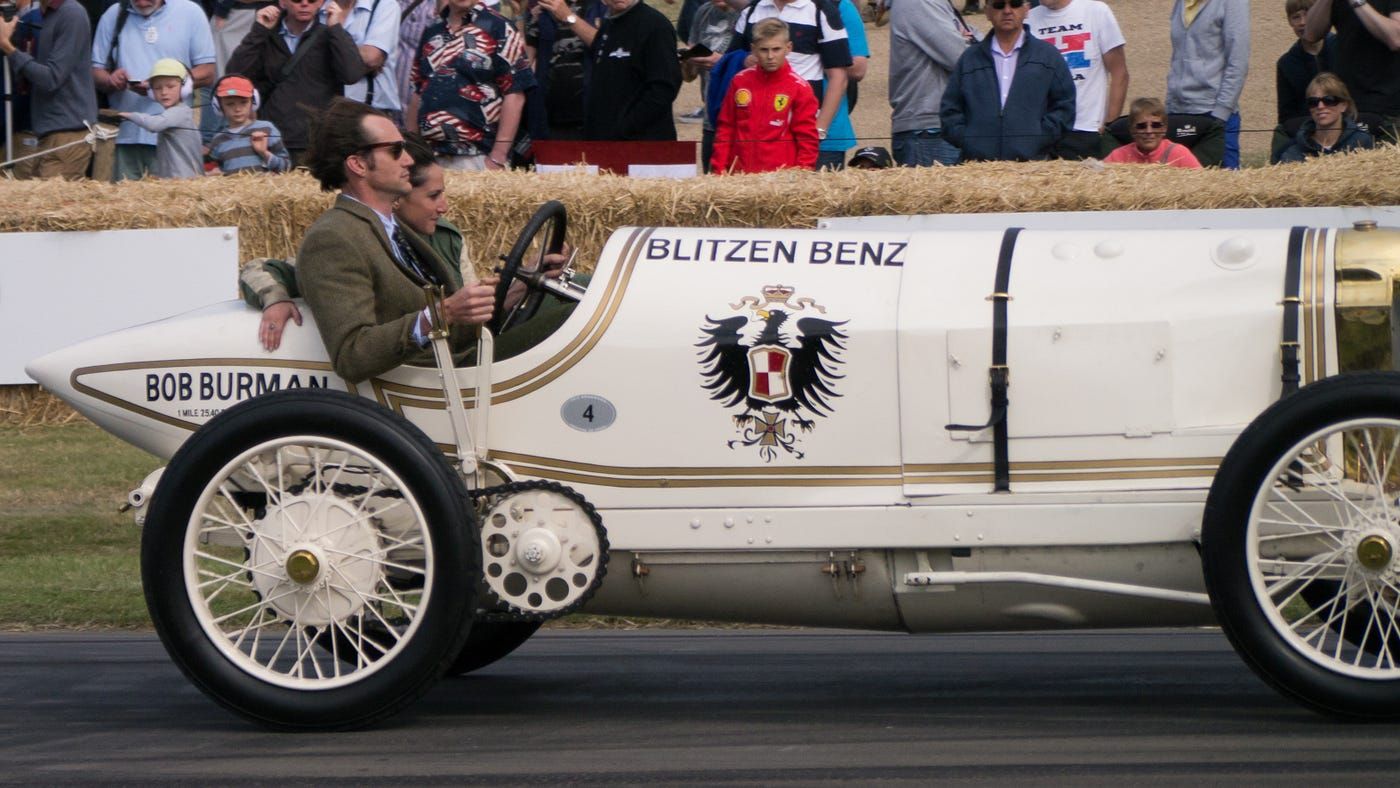
6. **Beyond Cars: Vintage Industrial Powerhouses**Beyond the captivating array of cars, the British countryside estate also held another fascinating category of forgotten machinery: vintage industrial equipment. One particular structure on the property was found to house an impressive collection of vintage tractors, bulldozers, and remarkably, even a functioning windmill. This discovery further reinforced the notion that the estate was once a vibrant and active working property, deeply connected to both agriculture and broader machinery.
These industrial powerhouses, standing alongside the more glamorous sports cars, provide a holistic view of the estate’s functional history. The presence of such heavy equipment indicates a self-sufficient or commercially active property, where the power of machinery was harnessed for various purposes. A functioning windmill, in particular, speaks to an earlier era of resourcefulness and self-reliance, adding yet another layer to the property’s rich narrative.
For collectors and historians of industrial equipment, these finds are just as significant as the cars. They offer a tangible link to past agricultural and construction practices, showcasing the tools and technologies that shaped rural life. The undisturbed nature of the site, with these machines left in situ, provides invaluable context, making this discovery a true snapshot in time for various fields of historical study.
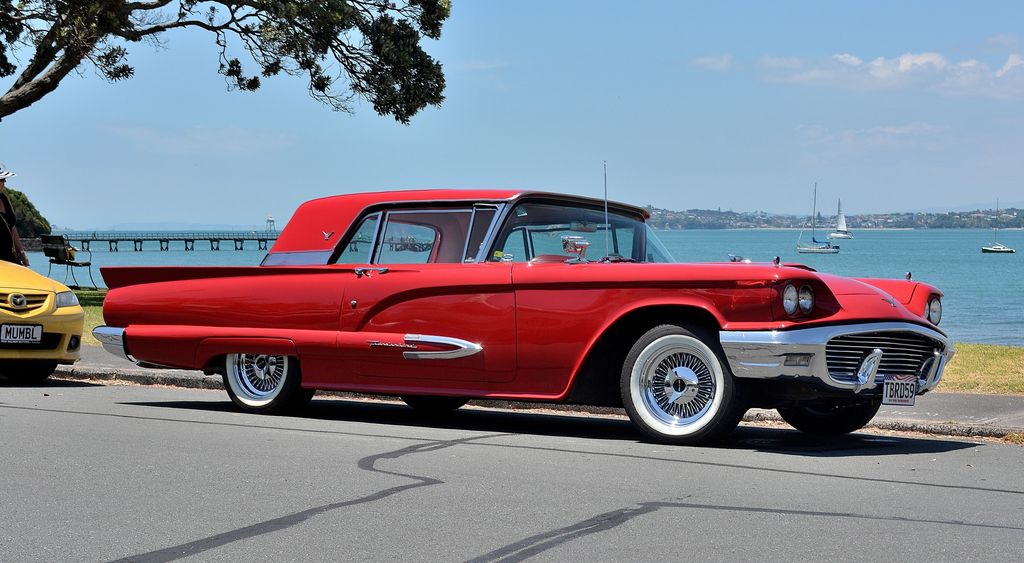
7. **American Iron’s First Appearance: The 1959 Ford Thunderbird**Crossing the Atlantic, the allure of the forgotten automobile continues to captivate, as evidenced by a remarkable discovery in an seemingly abandoned home garage in the United States. Tucked away behind the weathered walls of a long-neglected mansion lay a time capsule of Detroit iron, with the first vehicle to catch the eye being a striking 1959 Ford Thunderbird. This iconic American classic was identifiable by its distinct grille and trim, a testament to its enduring design.
According to the documentation by YouTuber “RangerRickTV,” this property was once owned by an elderly couple, and since their passing, the estate, including its garage, had reportedly remained unsettled and virtually undisturbed. The Thunderbird, though not particularly rare in terms of production numbers, derived immense potential value from its preservation status as an unrestored survivor. This originality makes it highly desirable among serious collectors who prioritize authenticity.
Likely powered by a 352ci V8, this ‘Squarebird’ era Thunderbird is a symbol of late 1950s American automotive luxury and style. Its remarkably solid condition, despite years of neglect, speaks to the robust engineering of the era and the protective environment of the garage. The discovery of such an intact, unrestored example of this classic underscores the incredible potential that lies hidden in forgotten corners, waiting for someone to bring these automotive legends back to life.
Car Model Information: 2003 Ford Thunderbird
Name: Ford Thunderbird
Caption: 1957 Thunderbird
Manufacturer: Ford Motor Company
Production: unbulleted list
ModelYears: unbulleted list
Class: unbulleted list
Layout: Front-engine, rear-wheel drive layout
Categories: 1960s cars, 1970s cars, 1980s cars, 1990s cars, 2000s cars
Summary: The Ford Thunderbird is a personal luxury car manufactured and marketed by Ford Motor Company for model years 1955 to 2005, with a hiatus from 1998 to 2001. Ultimately gaining a broadly used colloquial nickname, the T-Bird, the model was introduced as a two-seat convertible, subsequently offered variously in a host of body styles including as a four-seat hardtop coupe, four-seat convertible, five-seat convertible and hardtop, four-door pillared hardtop sedan, six-passenger hardtop coupe, and five-passenger pillared coupe, before returning in its final generation, again as a two-seat convertible. At its inception, Ford targeted the two-seat Thunderbird as an upscale model. The 1958 model year design introduced a rear seat and arguably marked the expansion of a market segment that came to be known as personal luxury cars, positioned to emphasize comfort and convenience over handling and high-speed performance.
Get more information about: Ford Thunderbird
Buying a high-performing used car >>>
Brand: Ford Model: Thunderbird
Price: $15,000 Mileage: 49,430 mi.
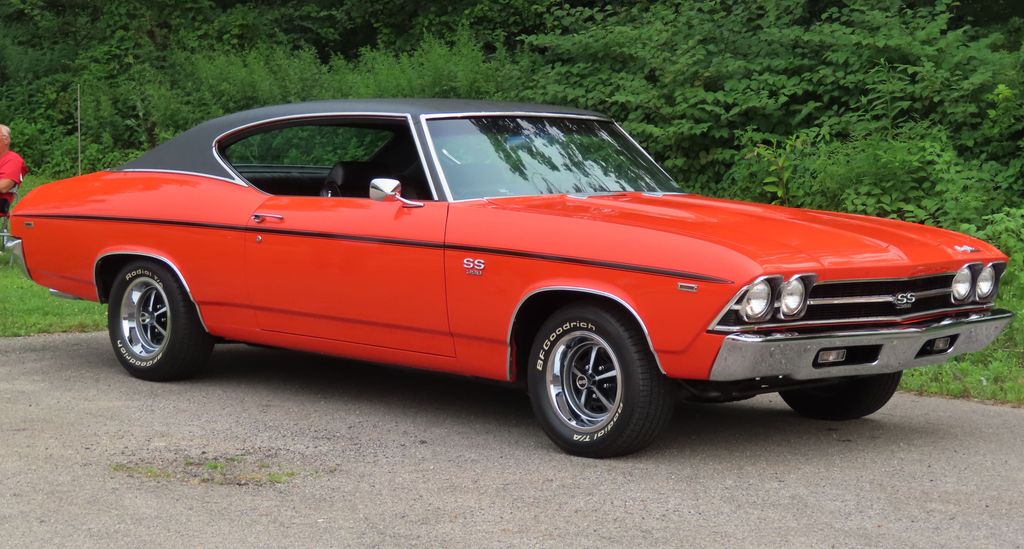
8. **The Potent 1969 Chevrolet Chevelle SS 396**This garage, holding secrets within its dusty confines, wasn’t done revealing its automotive gems. Alongside the dignified Thunderbird, another quintessential piece of American muscle lay waiting: a 1969 Chevrolet Chevelle SS 396. This model, a beacon of raw power and iconic styling from the golden age of muscle cars, would typically set any enthusiast’s heart racing. Its presence confirmed that the property’s former owner possessed a truly diverse and passionate appreciation for performance vehicles, ranging from luxurious cruisers to brute-force machines.
What makes this particular Chevelle so intriguing is its reported modification. While factory-badged as an SS 396, indicating a specific high-performance variant, the vehicle reportedly houses a swapped 454ci engine. This detail suggests a history of “hot-rodding,” where passionate owners modify their cars for even greater power and speed, a common and beloved aspect of American automotive culture. This particular Chevelle therefore represents a personalized, potent remnant of its former self, echoing the era’s spirit of maximizing performance. Its original owner clearly wasn’t content with just a powerful car; they wanted a true beast.
The last known listing for this Chevelle dates back more than a decade, further emphasizing how long it has been in its quiet seclusion. For serious collectors, an unrestored muscle car, especially one with a period-correct or even a carefully chosen upgraded engine, represents a unique opportunity to own a piece of automotive history that has retained its authentic character and story. It truly embodies the spirit of an era where horsepower reigned supreme and cars were built with undeniable presence, waiting patiently to roar back to life on the open road.
Car Model Information: 2024 Acura RDX Base
Name: Chevrolet Chevelle
Caption: 1970 Chevrolet Chevelle SS 396 Sport Coupe
Manufacturer: Chevrolet
Production: 1963–1977
ModelYears: 1964–1977
Class: Mid-size
Platform: GM A platform (RWD)
Layout: FR layout
Successor: Chevrolet Malibu
Categories: 1970s cars, All articles needing additional references, All articles that may contain original research, All articles with specifically marked weasel-worded phrases, All articles with unsourced statements
Summary: The Chevrolet Chevelle is a mid-sized automobile that was produced by the Chevrolet division of General Motors (GM) in three generations for the 1964 to 1977 model years. Part of the GM A-body platform, the Chevelle was one of Chevrolet’s most successful nameplates. Body styles included coupes, sedans, convertibles, and station wagons. The “Super Sport” versions were produced through the 1973 model year and Lagunas from 1973 through to 1976.
After a four-year absence, the El Camino was reintroduced as part of the new Chevelle lineup in 1964.
From 1964 to 1969, GM of Canada sold a modified version of the Chevelle that included a Pontiac-style grille, and a LeMans instrument panel, marketed as the Beaumont.
The Malibu was the top-of-the-line model to 1972, and completely replaced the Chevelle nameplate starting with the redesigned, and downsized 1978 model year.
Get more information about: Chevrolet Chevelle
Buying a high-performing used car >>>
Brand: Chevrolet Model: Chevelle SS 396
Price: $42,875 Mileage: 27,708 mi.
Read more about: The 16 Most Iconic American Muscle Cars of the 60s & 70s

9. **The Elegant 1946/1947 Cadillac Series 62 coupe**Yet, even with a Thunderbird and a Chevelle sharing the space, the true crown jewel of this American garage find was arguably a vintage Cadillac, believed to be either a 1946 or 1947 Series 62 coupe. This magnificent post-war luxury machine stands as a testament to an era of refined design, opulent motoring, and a return to civilian vehicle production after the war. Its elegant lines and commanding presence offer a stark contrast to the aggressive muscle car nearby, highlighting the owner’s broad appreciation for automotive artistry.
Finished in what appears to be a striking Seine Blue Iridescent, the Cadillac still shines with an undeniable elegance, even after decades of neglect and dust accumulation. Its remarkably solid condition, despite the property’s reported undisturbed state since the owners‘ passing, is a testament to the robust build quality of its time and the protective environment of the garage. While its restoration history remains unclear, the fact that it has largely evaded extensive deterioration makes it an incredibly appealing prospect for discerning collectors who value originality.
With production numbers for the Series 62 in the low thousands for these post-war years, this model is considerably rarer than the mass-produced Thunderbird and certainly more unique than many mainstream classics of the period. At auction, vehicles of this caliber and exceptional original condition can often exceed $55,000, making this Cadillac a significant financial as well as historical find. It’s a powerful reminder that some of the most beautiful pieces of automotive art are waiting patiently, hidden away in unexpected places, for their moment to be rediscovered and celebrated by a new generation of enthusiasts.
Car Model Information: 2023 Kia Telluride EX X-Line
Caption: 1963 Cadillac Series Sixty-Two Convertible
Name: Cadillac Series 62
Manufacturer: Cadillac
Production: 1940–1942,1946–1964
Predecessor: Cadillac Series 61,Cadillac Series 65
Layout: Front-engine, rear-wheel-drive layout
Assembly: Detroit Assembly,Detroit, Michigan
Successor: Cadillac Calais,Cadillac de Ville series#Third generation (1965–1970)
Class: Full-size,Luxury vehicle#High-end luxury.2Ffull-size luxury cars
Categories: 1950s cars, 1960s cars, Articles with short description, Cadillac vehicles, Cars discontinued in 1964
Summary: The Cadillac Series 40-62 is a series of cars which was produced by Cadillac from 1940 through 1964. Originally designed to complement the entry level Series 61, it became the Cadillac Series 6200 in 1959, and remained that until it was renamed to Cadillac Calais for the 1965 model year. The Series 62 was also marketed as the Sixty-Two and the Series Sixty-Two. The Series 62 was used to introduce the Cadillac Coupe de Ville and the Cadillac Eldorado which started out as special appearance packages that were later placed into production.
Get more information about: Cadillac Series 62
Buying a high-performing used car >>>
Brand: Cadillac Model: Series 62
Price: $37,990 Mileage: 25,862 mi.
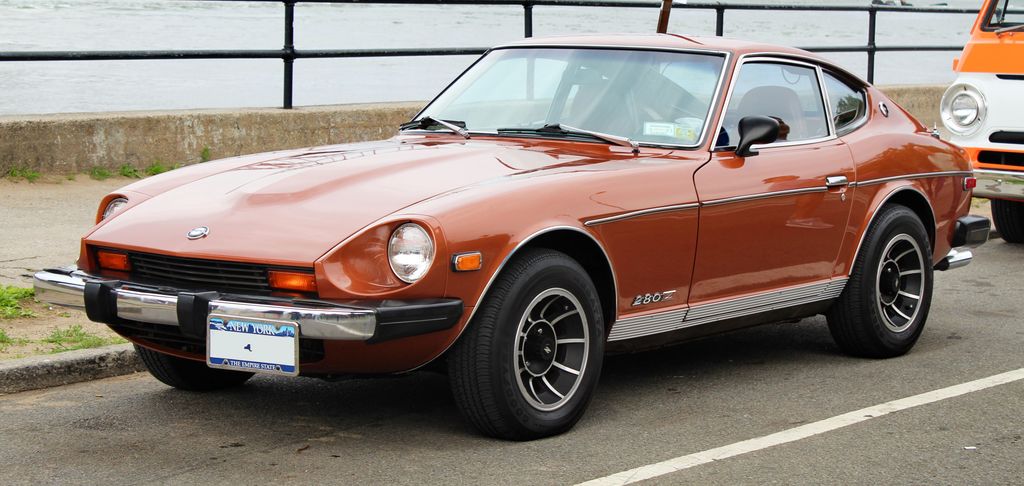
10. **The UK’s Hidden Datsun 280Z**Transitioning back across the Atlantic, the quest for automotive hidden gems leads us to another abandoned property in the UK, extensively explored by YouTube star “Exploring With Boss.” This sprawling site revealed a truly extensive and eclectic collection, among which a stunning Datsun 280Z immediately captured the imagination. For British enthusiasts, finding a Datsun 280Z in the UK is an incredibly rare occurrence, given their original market focus, making this particular discovery exceptionally exciting and noteworthy.
The Datsun Z-series cars are legendary across the globe for their compelling blend of Japanese reliability, accessible performance, and timeless European sports car styling. They offered enthusiasts a compelling alternative to more expensive European marques, delivering undeniable charm and driving purity. Despite being exposed to the elements for what appears to be a significant amount of time on the property, this particular 280Z surprisingly appears to be largely rust-free, a remarkable testament to its original build quality or perhaps a period of better protection earlier in its life.
The potential for a complete and sympathetic restoration for this Datsun is immense. Its inherent rarity in the UK market, combined with its seemingly solid underlying condition, makes it a highly sought-after candidate for a complete revival project. Imagine this classic Japanese sports car, once again gleaming and roaring down winding British roads, a powerful testament to its enduring design and the dedication of enthusiasts willing to breathe new life into forgotten automotive legends.
Car Model Information: 1976 Datsun 280Z
Name: Nissan Fairlady Z (Datsun 240Z, 260Z, and 280Z)
Aka: unbulleted list
Manufacturer: Nissan
Production: 1969–1978
Class: Sports car
Layout: Front-engine, rear-wheel-drive layout
Assembly: Hiratsuka, Kanagawa
BodyStyle: unbulleted list
Designer: Yoshihiko Matsuo
Predecessor: Datsun Sports
Successor: Nissan Fairlady Z (S130)
Caption: 1970–1973 Nissan Fairlady Z
Categories: 1970s cars, All Wikipedia articles written in American English, All articles with unsourced statements, Articles with short description, Articles with unsourced statements from February 2021
Summary: The Nissan S30, sold in Japan as the Nissan Fairlady Z but badged as the Datsun 240Z, 260Z, and 280Z for export, are 2-seat sports cars and 2+2 GT cars produced by Nissan from 1969 until 1978. The S30 was conceived of by Yutaka Katayama, the President of Nissan Motor Corporation U.S.A., and designed by a team led by Yoshihiko Matsuo, the head of Nissan’s Sports Car Styling Studio. It is the first car in Nissan’s Z series of sports cars.
The S30 had four-wheel independent suspension and a powerful straight-six engine with an overhead camshaft, features identified with far more expensive premium European sports cars and coupés such as the Jaguar E-Type and BMW 2800 CS, but absent from similarly priced sports cars such as the Alfa Romeo Spider, MGB and Opel GT, which had smaller four-cylinder engines and rear live axles. The S30’s styling, engineering, relatively low price, and impressive performance resonated with the public, received a positive response from both buyers and the motoring press, and immediately generated long waiting lists.
As a halo car, the S30 broadened the acceptance of Japanese carmakers beyond their image as producers of practical and reliable but prosaic and unfashionable economy cars. Datsun’s growing dealer network—compared to limited production imported sports cars manufactured by Jaguar, BMW, Porsche, Alfa Romeo, and Fiat—ensured both easy purchase and ready maintenance.
The S30 was initially sold alongside the smaller four-cylinder Datsun Sports, which was dropped from production in 1970. The S30 240Z is unrelated to the later 240SX, sold as the Silvia in Japan.
Get more information about: Nissan Fairlady Z (S30)
Buying a high-performing used car >>>
Brand: Datsun Model: 280Z
Price: $42,900 Mileage: 45,906 mi.
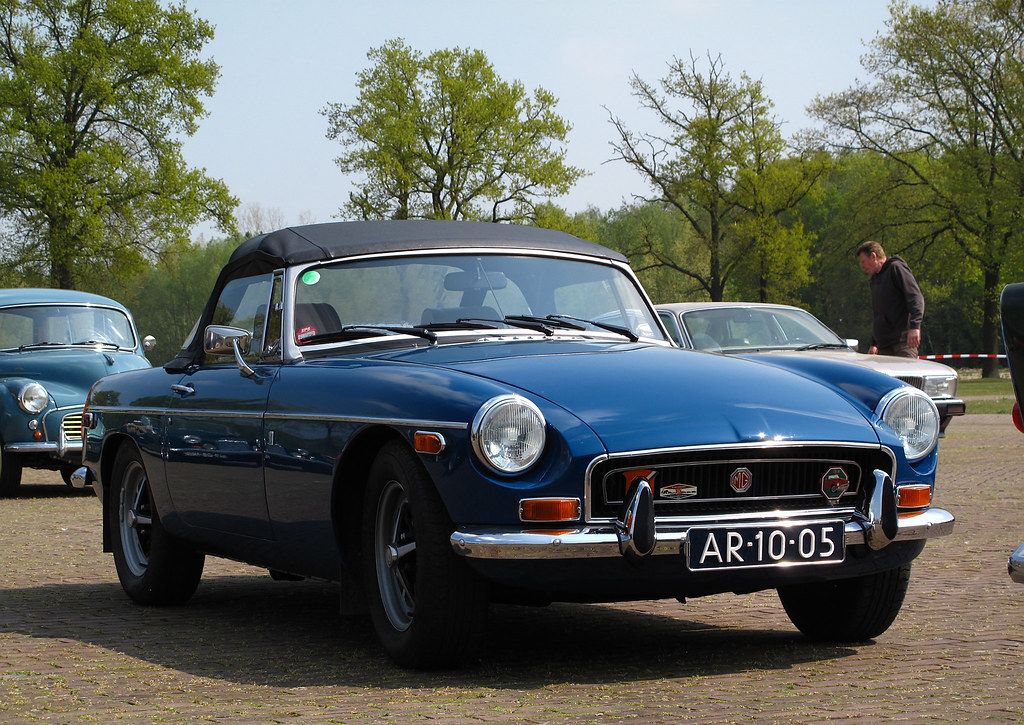
11. **The Enduring MG MGB**Within the same sprawling UK property, several cherished examples from MG, the quintessential British marque now under Chinese ownership, were unearthed. Among these, an MG MGB stood out, representing a beloved era of accessible British sports motoring. The MGB, a quintessential roadster, was a staple of classic car rallies and leisurely drives, embodying a particular kind of open-top enjoyment that has charmed generations of drivers worldwide with its simple mechanics and engaging character.
While still largely intact and immediately recognizable as the iconic sports car, this MGB had clearly suffered from prolonged exposure to the outdoors. The relentless British elements had taken their toll, leaving their unmistakable mark on its once-gleaming surfaces and interior. However, for a dedicated enthusiast, the sight of an MGB, even in a state of disrepair, is often viewed not as an end, but as a promising beginning – a rewarding canvas upon which to apply passion, skill, and expertise, transforming it back to its former glory.
The MGB’s widespread popularity and long production run mean that parts availability is generally excellent, making restoration a more feasible and less daunting task compared to working on rarer, more exotic finds. Its rediscovery on this abandoned estate is a poignant reminder of the fragility of even the most beloved machines when left to the mercy of time and nature, but also of their inherent resilience and the potential for a glorious second life in the hands of a caring owner.
Car Model Information: 1979 MG MGB
Name: MGB
Caption: 1969 MGB roadster – rollover bar non-standard
Layout: FR layout
Manufacturer: British Motor Corporation,British Leyland,Rover Group
Production: 1962–1980 (original),1992–1995 (MG RV8)
Predecessor: MG MGA
Successor: MG F / MG TF
Class: Sports car
Assembly: Abingdon, Oxfordshire,Enfield, New South Wales,Cowley, Oxford
Categories: 1970s cars, 1980s cars, 1990s cars, All articles lacking reliable references, All articles with unsourced statements
Summary: The MGB is a two-door sports car manufactured and marketed from 1962 until 1980 by the British Motor Corporation (BMC), later the Austin-Morris division of British Leyland, as a four-cylinder, soft-top sports car sold under the MG marque. It was announced and its details first published on 19 September 1962. Variants include the MGB GT three-door 2+2 coupé (1965–1980), the six-cylinder sports car and coupé MGC (1967–1969), and the eight-cylinder 2+2 coupé, the MGB GT V8 (1973–1976).
Replacing the MGA in 1962, production of the MGB and its variants continued until 1980, though fixed roof GT models ceased export to the US in 1974. Sales for the MGB, MGC and MGB GT V8 combined totaled 523,836 cars. After a 12-year hiatus, the MGB re-entered production as the heavily modified MG RV8 with a limited run of 2,000 cars before its final replacement in 1995 by the MG F.
Get more information about: MG MGB
Buying a high-performing used car >>>
Brand: MG Model: MGB
Price: $15,499 Mileage: 74,767 mi.
Read more about: Beyond the Garage: 15 Vintage Cars That Are Secretly Skyrocketing in Value Right Now
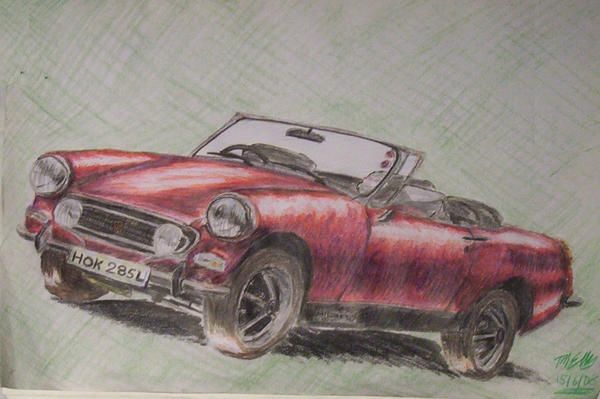
12. **The Nimble MG Midget**Further exploration of the overgrown grounds yielded yet another MG classic, this time the less famous but equally charming Midget model. Hidden away deep in the undergrowth, its small form almost completely swallowed by nature, this Midget, which made its debut in 1961, is essentially a smaller, more lightweight iteration of its MGB sibling. Its compact size, direct steering, and nimble handling made it a favorite among those who appreciated a more unadulterated and engaging driving experience, focusing on purity over power.
The Midget’s unearthing, tucked away as it was from immediate view, adds another fascinating layer to the narrative of this hidden UK collection. It strongly suggests a consistent taste for classic British roadsters, perhaps indicating the former owner’s profound preference for agile, open-top motoring that connected the driver directly to the road. Despite its long slumber in the wild, the Midget’s fundamental structure likely remains sound, offering a promising foundation for a comprehensive restoration project.
For enthusiasts, discovering a car like the MG Midget in such an untouched, ‘as-found’ condition is a unique and deeply satisfying thrill. It provides an authentic starting point for a sympathetic restoration, allowing for the preservation of its originality while bringing it back to a roadworthy state where it can once again deliver pure driving pleasure. This little roadster, once a symbol of post-war British optimism and accessible fun, now patiently awaits its chance to once again dart along winding country lanes and capture hearts.
Car Model Information: 1977 MG Midget
Caption: MG Midget Mark I (1963)
Name: MG Midget
Manufacturer: MG Cars
Production: 1961–1979
Class: Sports car
BodyStyle: Roadster (automobile)
Layout: FR layout
Successor: MG F / MG TF
Related: Austin-Healey Sprite
Engine: BMC A-Series engine,MkII: 1.1L (1098 cc) A-Series I4,MkIII: 1.3L (1275 cc) A-Series I4,Standard SC engine
Wheelbase: cvt
Length: cvt
Width: Mk I and II {{cvt,54,in,mm,0
Height: cvt
Weight: cvt
Assembly: Abingdon-on-Thames,Australia
Categories: 1970s cars, Articles with short description, CS1 Swedish-language sources (sv), Cars discontinued in 1979, Cars introduced in 1961
Summary: The MG Midget is a small two-seater lightweight sports car produced by MG from 1961 to 1979. It revived a name that had been used on earlier models such as the MG M-type, MG D-type, MG J-type and MG T-type.
Get more information about: MG Midget
Buying a high-performing used car >>>
Brand: MG Model: Midget
Price: $6,899 Mileage: 46,942 mi.
Read more about: 18 Rare European Car Gems You Probably Haven’t Seen
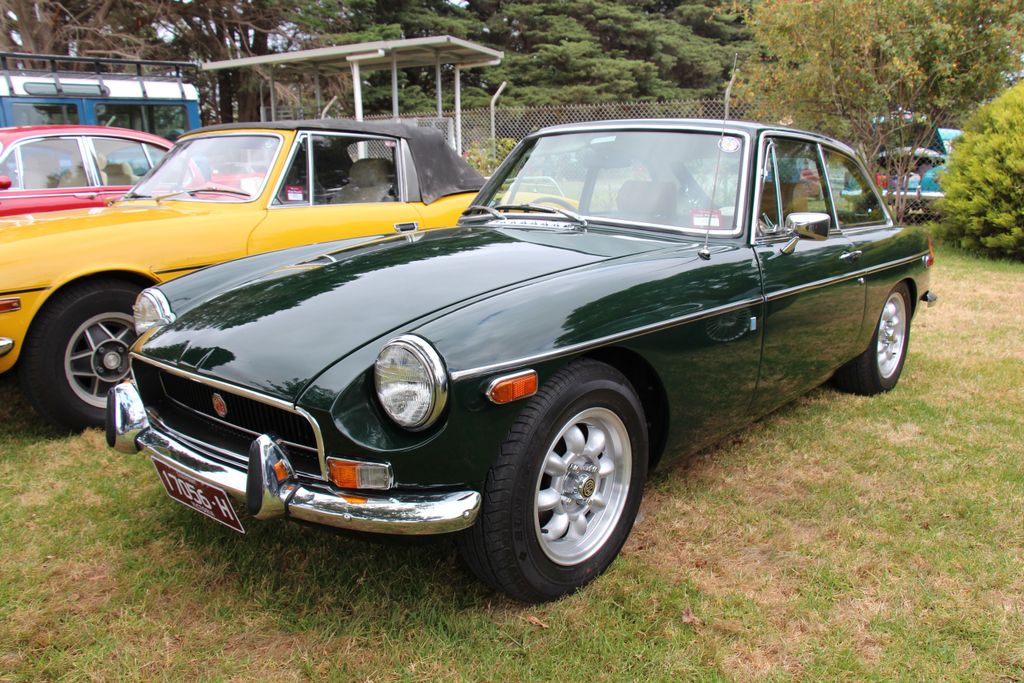
13. **The Gran Turismo Charm of the MGB GT Coupe**The series of significant MG finds on the UK property continued with the melancholic but equally compelling discovery of an MGB GT Coupe. This particular model, distinct from its open-top roadster siblings, offered a more enclosed, grand touring experience, blending sports car dynamics with enhanced practicality and comfort, thanks to its fixed roof and hatchback design. Its inclusion in this extensive collection further illustrates the breadth of the former owner’s appreciation for different facets of British motoring design and utility.
Sadly, the MGB GT Coupe was found in much worse condition than the other two MGs discovered on the property. Years of relentless exposure to the harsh elements had clearly taken a severe, visible toll, indicating that this particular vehicle would present a significant and challenging undertaking for any serious restoration efforts. However, even in its current state of advanced deterioration, it provides a valuable, albeit poignant, glimpse into the history of the marque and the eventual fate of many abandoned classics when left to fend for themselves against time and nature.
Despite the extensive deterioration, the MGB GT Coupe still holds intrinsic value for dedicated restorers, for its components, or even as a historical artifact. It serves as a stark reminder of the corrosive power of neglect, but also highlights the unwavering dedication of those automotive archaeologists who painstakingly bring such vehicles back from the very brink of oblivion. Its presence reinforces the narrative of a once-vibrant collection that was slowly but surely consumed by time, yet whose remnants continue to tell a compelling and cautionary tale for generations of car lovers.
Car Model Information: 2024 Acura RDX Base
Name: MGB
Caption: 1969 MGB roadster – rollover bar non-standard
Layout: FR layout
Manufacturer: British Motor Corporation,British Leyland,Rover Group
Production: 1962–1980 (original),1992–1995 (MG RV8)
Predecessor: MG MGA
Successor: MG F / MG TF
Class: Sports car
Assembly: Abingdon, Oxfordshire,Enfield, New South Wales,Cowley, Oxford
Categories: 1970s cars, 1980s cars, 1990s cars, All articles lacking reliable references, All articles with unsourced statements
Summary: The MGB is a two-door sports car manufactured and marketed from 1962 until 1980 by the British Motor Corporation (BMC), later the Austin-Morris division of British Leyland, as a four-cylinder, soft-top sports car sold under the MG marque. It was announced and its details first published on 19 September 1962. Variants include the MGB GT three-door 2+2 coupé (1965–1980), the six-cylinder sports car and coupé MGC (1967–1969), and the eight-cylinder 2+2 coupé, the MGB GT V8 (1973–1976).
Replacing the MGA in 1962, production of the MGB and its variants continued until 1980, though fixed roof GT models ceased export to the US in 1974. Sales for the MGB, MGC and MGB GT V8 combined totaled 523,836 cars. After a 12-year hiatus, the MGB re-entered production as the heavily modified MG RV8 with a limited run of 2,000 cars before its final replacement in 1995 by the MG F.
Get more information about: MG MGB
Buying a high-performing used car >>>
Brand: MG Model: MGB GT Coupe
Price: $42,875 Mileage: 27,708 mi.
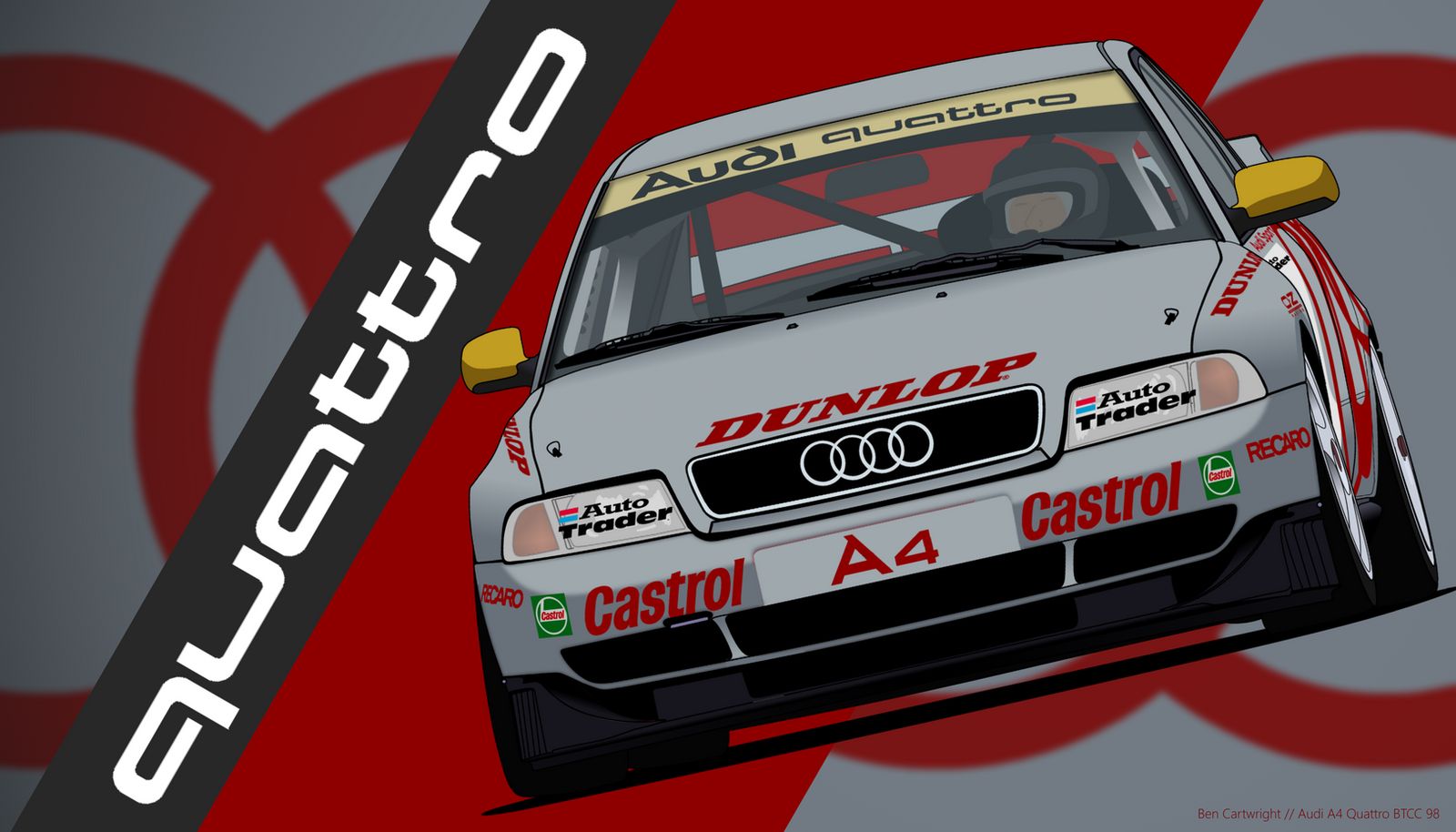
14. **The Rare Audi 80 B2 with Quattro Badge**Completing the remarkable inventory of this particular UK property was an unexpected, yet highly significant, discovery that speaks volumes about the former owner’s eclectic tastes: a classic and seldom-seen Audi 80 B2. Found tucked away within one of the larger, somewhat more protected buildings on the estate, likely a model from the 1980s, its most telling feature was the unmistakable Quattro badge proudly displayed on its rear. This single detail immediately elevated its status from a mere classic sedan to a revered piece of rally and performance heritage.
The Audi 80 B2, especially with the iconic Quattro designation, represents Audi’s pioneering foray into all-wheel-drive performance that fundamentally revolutionized rallying and significantly influenced the automotive industry worldwide. Finding such a model, particularly in an abandoned state in the UK, is a testament to the diverse and discerning tastes of the estate’s former occupant and adds a fascinating layer of sophisticated German engineering to the predominantly British collection. Its presence suggests an appreciation for innovative technology and advanced performance capabilities.
The condition of this Audi, while not explicitly detailed beyond being found in a building that offered some shelter, offers intriguing prospects for revival. If its location provided sufficient protection from the elements, it could be a highly rewarding restoration project for an enthusiast of vintage German cars and rallying history. The enduring allure of the Quattro system, coupled with the increasing rarity of the 80 B2 in such original states, makes this a truly compelling find, embodying the rich tapestry of automotive archaeology and the hidden treasures it continues to yield worldwide.
Car Model Information: 2024 Acura RDX Base
Name: Audi 80 and Audi 90
Caption: Audi 80 (B4)
Manufacturer: Audi
Aka: Audi Fox ,Audi 4000 ,Audi 4000 5+5 ,Audi 5+5 ,Audi 4000S
Production: 1966–1996
Assembly: Ingolstadt,Emden,Wolfsburg,Clayton, Victoria
Predecessor: Audi F103
Successor: ubl
Class: Compact executive car
Layout: Longitudinal engine,Front-engine, front-wheel-drive layout,front-wheel-drive
Platform: Volkswagen Group B platform
Related: Audi Cabriolet,Audi Coupé,Volkswagen Passat
Sp: uk
Categories: 1980s cars, 1990s cars, All-wheel-drive vehicles, All articles needing additional references, All articles with unsourced statements
Summary: The Audi 80 is a compact executive car produced by the Audi subdivision of the Volkswagen Group across four generations from 1966 to 1996. It shared its platform with the Volkswagen Passat from 1973 to 1986 and was available as a saloon, and station wagon — the latter marketed by Audi as the Avant. The coupé and convertible models were not badged as members of the range, but used a derivative of the same platforms.
In North America and Australia, the 80 was marketed as the Audi Fox for model years 1973–1979, as the Audi 4000 for model years 1980–1987 in the US, as Audi 4000 5+5 from 1981 in the US, and Audi 5+5 in Australia during 1981 through 1983.
The Audi 90 was an upmarket version of the Audi 80, although all North American sedans of the B4 generation were called Audi 90.
Get more information about: Audi 80
Buying a high-performing used car >>>
Brand: Audi Model: 80 B2
Price: $42,875 Mileage: 27,708 mi.
These remarkable discoveries, whether nestled deep within a sprawling British countryside estate or quietly tucked away in an unassuming American suburban garage, continue to fuel the passion and imagination of automotive enthusiasts globally. They are far more than just discarded vehicles; they are poignant relics, each bearing the marks of time and neglect, yet with a unique story to tell, patiently waiting for someone to peel back the layers of dust and time. The enduring thrill of the ‘barn find’ isn’t solely about the potential monetary value or the inherent rarity of the cars themselves, but about the profound connection to the past they offer—a tangible link to the dreams, pursuits, and personal passions of those who once owned them. As we look at these forgotten machines, we’re not just seeing aged metal and degraded rubber; we’re witnessing living history, eager to be rewritten, revved back to life, and driven into a vibrant new chapter. The world of automotive archaeology remains an endless source of wonder, proving that extraordinary adventure and incredible beauty often lie where you least expect them, patiently waiting to be unearthed.

